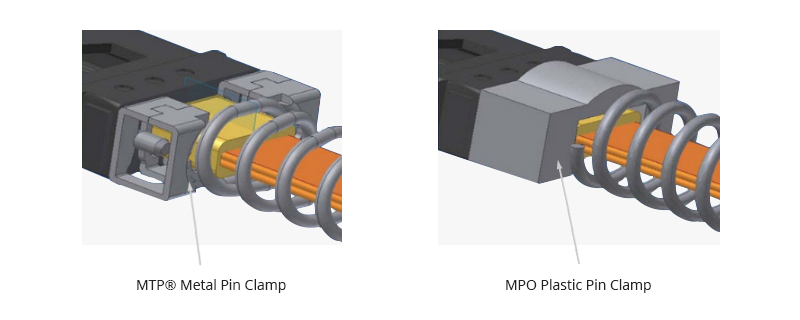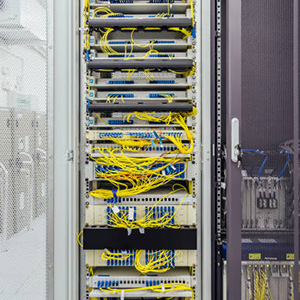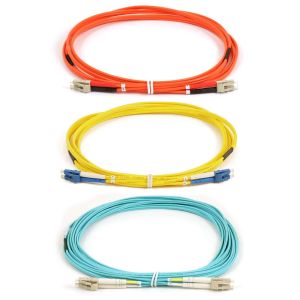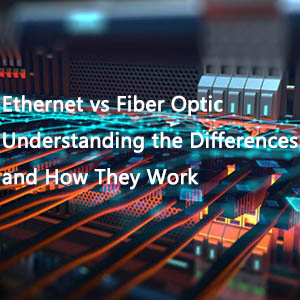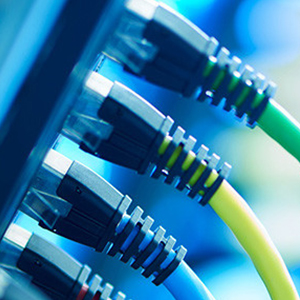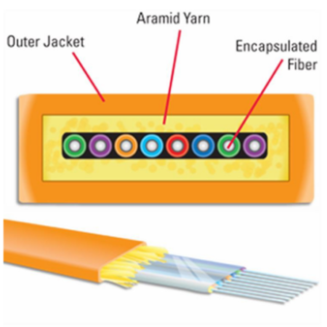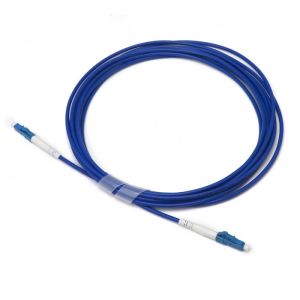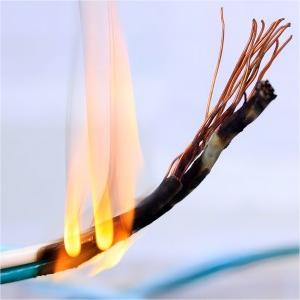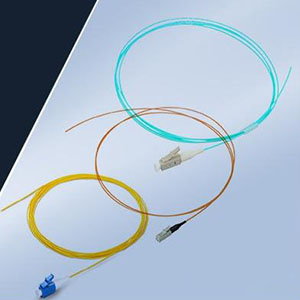Are MTP VS MPO® Fiber Patch Cords The Same?The answer is no. Although both MTP and MPO® fiber patch cords have connectors at both ends, they are also bendable and have low loss characteristics, making them more suitable for high-density wiring systems. However, the connectors of MTP and MPO® fiber patch cords are different. If you want to know, read on!
MTP® vs MPO Fiber Patch Cords Introduce
MPO (Multi-Fiber Push On) cables are capped with MPO connectors at either end. MPO fiber connector is designed to provide multi-fiber connectivity in one connector to support high bandwidth and high-density cabling system applications. MPO connector is compliant with the IEC 61754-7 standard and the U.S. TIA-604-5 standard. At present, MPO connectors are typically available with 8, 12, 16 or 24 fibers for common data center and LAN applications, and 32, 48, 60, 72 fiber counts are also possible in large scale optical switches for specialty super high- density multi-fiber arrays.
MTP® cables, short for (Multi-Fiber Pull Off), are equipped with MTP® fiber connectors at either end. MTP® connector is a trademark by US Conec for a version of the MPO connector with improved specifications. So MTP® connectors are fully compliant with all generic MPO connectors and can interconnect directly with other MPO based infrastructures. However, the MTP® connector is a multiple engineered product enhancement to improve mechanical and optical performance when compared to generic MPO connectors. Click here to know learn more about MTP® optical connectors.
MTP® vs MPO Fiber Patch Cords The Difference
The key difference between MTP® and MPO fiber optic cables lies in their fiber optic connectors. As the improved version, MTP® fiber patch cables equipped with MTP® connectors have better mechanical designs and optical performances.
MTP® vs MPO Fiber Patch: Mechanical Designs
Pin Clamp
MPO connector is usually equipped with inferior plastic pin clamps, which may lead to effortless breaking of pins with constant cable mating, while the MTP® connector has a metal pin clamp to ensure a strong clasp on the pins and minimize any inadvertent breaking when mating connectors. In the MTP® connector, the oval spring is used to maximize the gap between fiber ribbon and spring, which can protect the fiber ribbon from damage during insertion. The MTP® cable design includes a recessed pin clamp and oval spring will ensure a secure spring seat, and greater clearance between the spring and the ribbon cable in order to reduce the risk of damage to the MTP® cable.
MTP® vs MPO Cable Pin Clamp
Floating Ferrule
The floating ferrule is adopted in an MTP® cable for improving mechanical performance. In other words, the floating ferrule of the MTP® connector can float inside to keep physical contact over a mated pair under an applied load. However, MPO fiber connector is not manufactured with the floating ferrule. The floating ferrule feature was particularly important for applications in which the cable plugs directly into an active Tx/Rx device, and was one of the primary reasons made the MTP® connector ideal for emerging parallel optics Tx/Rx applications.
Guide Pins
Unlike single fiber connectors, the adapters for multi-fiber connectors are only for coarse alignment. Thus the guide pins are critical for accurate alignment when mating two MT ferrules. The guide pins adopted by MTP® and MPO connectors are also different. The MTP® connector uses tightly held tolerance stainless steel elliptical guide pin tips to reduce the amount of debris that may fall into the guide pin holes or on the ferrule end face. However, the chamfered shaped guide pins adopted by MPO connectors will produce more debris when used.
MTP® vs MPO Cable Guide Pins
Removable Housing for MTP® Fiber Patch
When comparing MTP® and MPO connectors, their housing removability is one of the important factors. MPO connectors do not guarantee a removable housing. However, the MTP® connector is designed to have a removable housing which allows users to re-work and re-polish the MT ferrule and easily get access to performance testing and to smoothly change the gender after assembly or even in the field. There is an MTP® cable called MTP® PRO cable that can allow quick and effective cable gender and polarity reconfiguration in the field while ensuring product integrity and performance. For more information about the polarity change of MTP®/MPO PRO cable, please refer to the Instructional Guide to Field Tool for MTP® PRO Cables.
MTP® Cable Removable Housing
MTP® vs MPO Fiber Patch Optical Performance
Insertion-loss
The MPO connector has been recognized as an international standard in network architecture for many years. MTP® connectors, as the advanced version, are improved to minimize issues like optical loss, dropped packets, and so on. MTP® connectors in MTP® Fiber Patch are designed to ensure precision alignment of the male and female sides, which will help to reduce the insert loss and return loss of the MTP cable when transmitting the data in high-density cabling systems. Furthermore, MTP® Fiber Patch insertion loss rates have continued to improve, now rivaling loss rates that single-fiber connectors saw just a few years ago.
Reliability
Compared with the previous MPO Fiber Patch, the latest MTP® Fiber Patch formats can plug in without problems, and are less likely to have accidental bumps that may result in signal instability. The internal connector components were redesigned in the MTP® format to ensure perfectly centered normal forces between the mating ferrules, ensuring physical contact of all polished fiber tips in the ferrule. Besides, the lead-in on the precision alignment guide pins to an elliptical shape has also been optimized, reducing the wear and tear and debris generation from plugging and re-plugging the connector multiple times. These additional improvements to the precision of MTP® connector components resulted in increased stability and boosted durability performance while continuing to enhance the optical connectors’ overall reliability.
Future Trends of MTP®Fiber Patch
With over 20 years of continuous improvement and the promise of forthcoming advancements, the MTP® connectors allowed multi-fiber connectors to provide more consistent, reliable performance. As an optimal solution designed for the trend of high-speed, high-density, and well-organized cabling, the MTP® connector scales to new parallel applications such as 400G Ethernet capable of running across 32, 16, and 8 fibers. With robust engineering, MTP® connectors have also been widely adopted in a wide range of operating environments, including those with high humidity, extreme heat and cold, and fluctuating temperatures.
MTP® cables also deliver exceptional value for a vast range of network technologies, which are not just built for mega-cloud, big data, and hyper-scale computing. The latest versions of MTP® connectors are designed to work not only with actual fiber-to-fiber connections but with other technologies across many vertical industries covering financial, medical, educational, colocation, and so on. In addition, MTP® cables are also a reliable choice for high-density wiring for 5G infrastructure.
MTP® and MPO Fiber Patch FAQs
Q: Is the MTP® connector an MPO connector?
A: Yes. The MTP® connector is a high-performance MPO connector engineered for better mechanical and optical performance. Note that all MTP®s are MPOs but not all MPOs are MTP®s.
Q: What is an MTP® Elite?
A: The MTP® Elite version provides lower insertion loss compared to the standard MTP® fiber optic cable. The maximum insertion loss for a mated pair is 0.35db vs 0.6db for multimode fiber cables, and 0.35db vs 0.75db for single-mode fiber cables.
Q: What is an MTP® Pro cable?
A: The MTP® PRO patch cord is pre-terminated with MTP® PRO connectors and factory-polished for low loss performance. With a novel design featuring simplicity and reliability, the MTP® PRO connector offers quick and effective polarity and pin reconfiguration in the field while ensuring product integrity and performance.
Q: Should I use MTP® or MPO cable for high-density cabling systems?
A: Both MTP® and MPO fiber optic cables can be used for high-density cabling structures, but MTP® connector is an enhanced version of MPO connector to improve optical and mechanical performance in the data center cabling architecture. It provides you with the flexibility to make changes or upgrades to your network without having to source specialist engineers to carry out gender or polarity changes.

